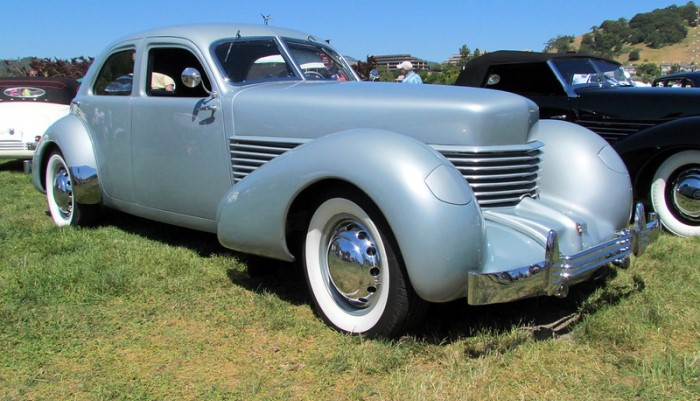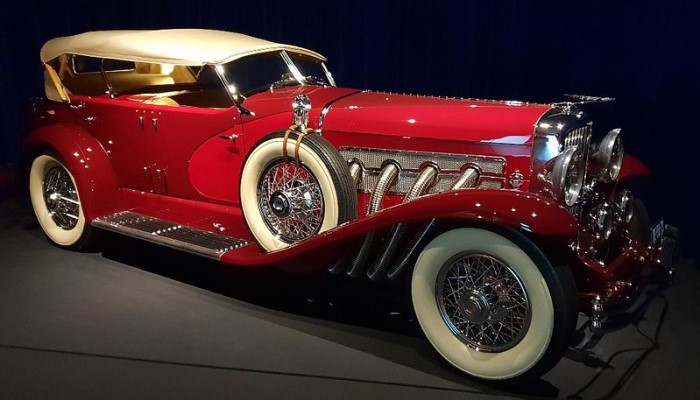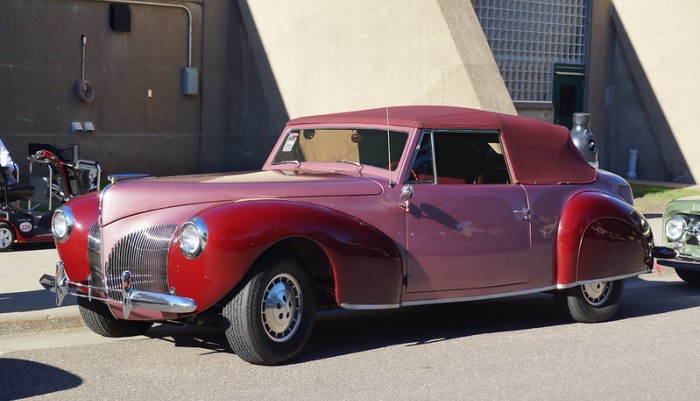1934 Chrysler Airflow
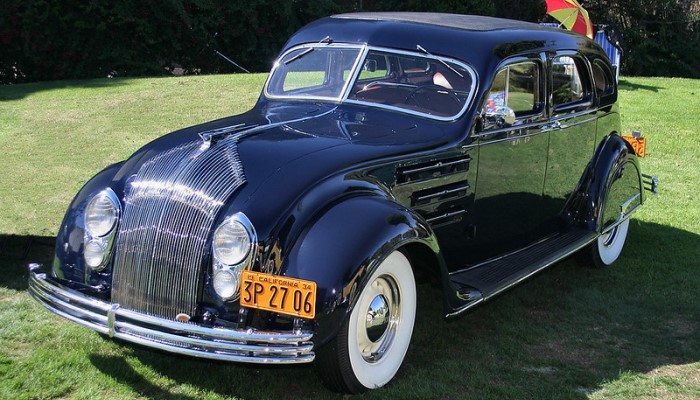
Photo: "File:1934 Chrysler Airflow sdn - blue - fvl.jpg" by Rex Gray
Ahead of its Time
Many believe that Walter Chrysler made a mistake. Then this is his first mistake in many years.
Chrysler was not mistaken when, in 1926, he bought a solid company called Dodge; he was not mistaken when, a year before the start of the global crisis, he began to produce cheap cars under the Plymouth brand.
However, after ten years of successful car production, Walter Chrysler made a mistake. And that mistake was the Airflow model.
The idea for this car originated in 1927, when Carl Breer, one of the company's leading engineers, saw a squadron of military aircraft and thought about the natural form of aircraft and the possibility of applying the laws of aerodynamics to the design of cars.
Soon, the shape of the future car began to emerge: oval in front and smoothly lowering in the back.
The engine has moved forward, and the rear seat, traditionally located above the bridge, has risen in front of it, adding comfort to passengers.
By the end of 1933, the six-year work was completed, and the finished Airflow prototype was sent for testing, where a six-seater car with an in-line eight-cylinder engine of 324 cu in (5,318 cc) and 130 hp showed good driving performance and a top speed of 80 mph (130 kph).
Introduced at the 1934 New York Auto Show, the Chrysler Airflow was a hit with the press. Harper's Bazaar wrote that the new Chrysler Airflow was breathtakingly original.
The English magazine Autocar sagely remarked, “The more you look at this car, the more you like it,” and the American Motor put it even more clearly: “Look at Airflow two or three times in a row, and ordinary cars seem strange to the point of ugliness.”
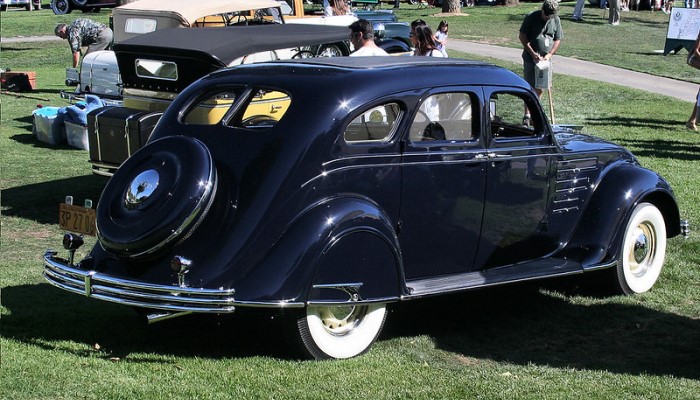
Photo: "1934 Chrysler Airflow sdn - blue - rvr" by Rex Gray
The public reacted less enthusiastically. Visitors walked around the Chrysler Airflow, but for a long time they could not believe that this was today's car and not a promising model from the distant future.
Realizing that this is a production car, they began to buy it. But sales volumes were disappointing. In 1934, 8,389 cars were sold; in 1935, 7,564; in 1936, 4,500; and a hundred more in 1937.
Soon, the car was forgotten. American buyers weren't ready to accept the unfamiliar, streamlined shapes that would only become commonplace a decade later.
A progressive, revolutionary idea that appeared ahead of time did not receive support from buyers and failed.
The Chrysler Airflow didn't do much harm to the corporation; it held on well by selling cheap Dodges and Plymouths.
Why did Airflow fail?
The Chrysler Airflow is a typical example of a vehicle that was ahead of its time, but not in the way that the manufacturer had anticipated.
The Airflow was the first car to be built using wind tunnel testing, yielding a streamlined shape intended to increase both performance and fuel efficiency.
Despite its original design, the Airflow was a commercial flop, and Chrysler's millions of dollars in advertising most likely contributed to this.
One of the most significant concerns with the Airflow was that it simply looked too different from the cars of the day.
In the 1930s, boxy designs were the standard, and the car-buying public was simply unprepared for the Airflow's streamlined lines.
Furthermore, the automobile was uncomfortable to ride in, with limited rear seats and a bumpy ride due to the suspension design.
Despite these issues, Chrysler was determined to make the Airflow a success, pouring millions into advertising campaigns that touted its innovative design and fuel efficiency.
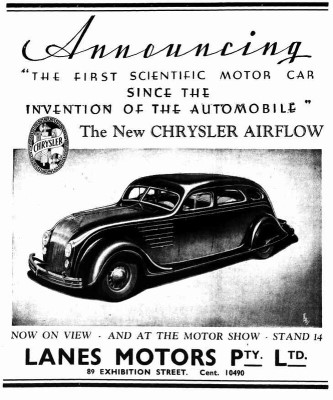
But the public simply wasn't buying it, and by the end of 1934, sales had fallen far short of expectations.
In the end, Chrysler was compelled to return to more traditional car designs, and the Airflow became a footnote in automotive history.
Looking back, it's difficult not to regard the Airflow as a waste of money on the part of Chrysler. While the corporation may have had the finest intentions in building an innovative and forward-thinking vehicle, the public was just not prepared for it.
And with so much money spent on advertising campaigns that fell on deaf ears, it's easy to see where the company went wrong.
But in the end, the Airflow remains an interesting chapter in the history of automotive design, a reminder that sometimes even the most innovative ideas can fall short.
Airflow in Today's Market
The Chrysler Airflow is a classic vehicle that still holds its own in today’s market. As a vintage car, its value has increased significantly over the years.
It has become one of the most sought-after vehicles among collectors and auto enthusiasts. Owners of a Chrysler Airflow usually experience a sense of pride and satisfaction in owning such an iconic car.
The Airflow was the first mass-produced car to be designed with the aerodynamics in mind. Its sleek, modern design set it apart from other cars of the era.
This distinctive shape is still recognizable today. The design also offered a more comfortable and luxurious ride than traditional vehicles.
The Chrysler Airflow has many features that make it a desirable car in today’s market. Its iconic styling remains intact and is often a conversation starter.
The interior in many Airflows has been well-preserved, making them a great option for collectors and enthusiasts who want a classic car with modern amenities.
Owning a Chrysler Airflow today also offers several practical benefits. The car runs and drives reliably, providing its owner with the chance to experience classic motoring at its best.
It also provides better fuel economy than many other cars of the era, making it a good choice for drivers who don’t want to spend a fortune on gas.
The Chrysler Airflow remains a popular choice among classic vehicle owners and collectors, as its distinctive styling and luxury always impresses.
Its values have steadily increased over the years, making it an attractive choice for those looking to make an investment in a timeless ride.
How Much is a Airflow Today?
Today, the rarity and unique design of this model make it a highly sought-after classic car. As a result, the price of a Chrysler Airflow can vary greatly, depending on the car's condition and originality.
The more original a car is, and the better its condition, the more expensive it will be. For an original and well-maintained Chrysler Airflow, prices can range from $20,000 to over $200,000.
On the other hand, less-original cars, such as a restoration project, can be had for much less — usually anywhere from around $7,500-$15,000. The highest price was achieved in September 2020 in Auburn, IN, USA, and was $209,000. (Worldwide Auctioneers)
Here we are talking about models in original condition. We did not include custom vehicles in this story.
One thing to consider when looking at the price of a Chrysler Airflow is that due to its rarity, the car can be difficult to find and therefore prices can vary significantly among different examples.
As such, it is best to inspect any car closely and run a thorough history check before purchasing, to make sure the price is in line with the condition of the car.
Finding the right car is essential to finding an excellent value, and since such a car is very hard to come by, it pays to be patient and look around until you find the perfect one.

Unique Car Zone Team
A group of several fans of everything that moves on four wheels, a few article creators, a couple of marketing strategists, designers, web developers, and lots of coffee.




